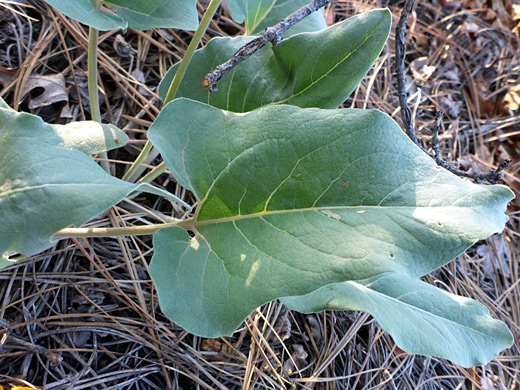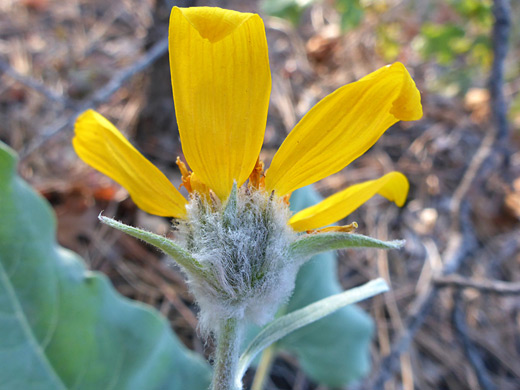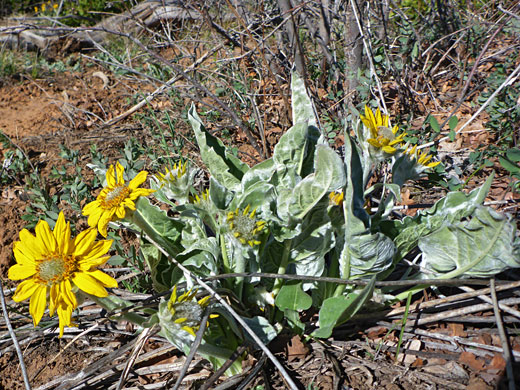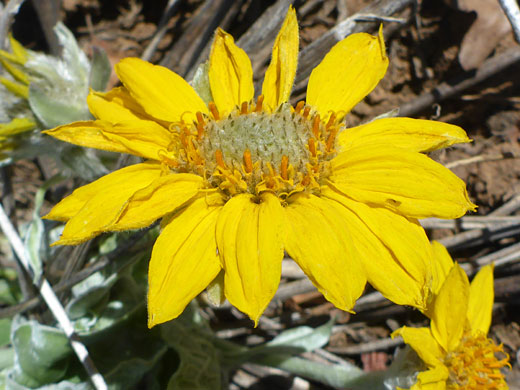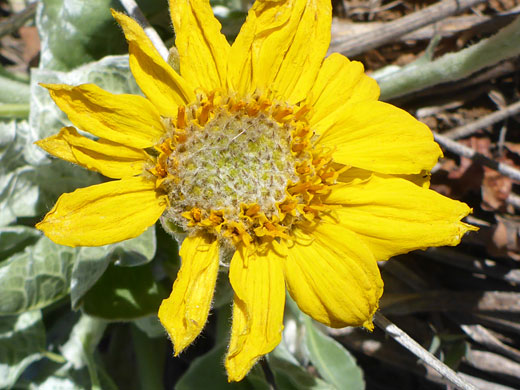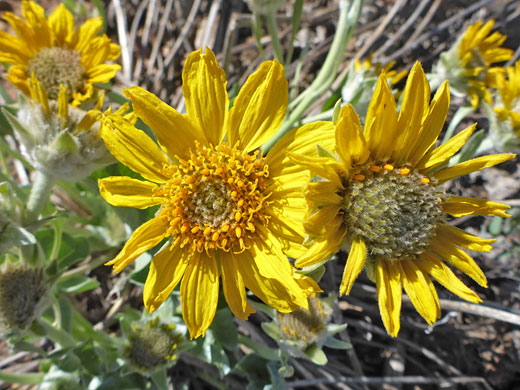Balsamorhiza Sagittata, Arrowleaf Balsamroot
Plants > Wildflowers > Asteraceae > Balsamorhiza Sagittata
Common name:
Arrowleaf balsamroot
Family:
Scientific name:
Balsamorhiza sagittata
Main flower color:
Range:
The Rocky Mountain states and all states to the west, except New Mexico
Height:
Up to 50 cm
Habitat:
Forest openings, meadows, sagebrush plains, hillsides; from 3,000 to 8,000 feet
Leaves:
Basal, long-stalked, the blades triangular, with rounded (cordate) bases, and up to 10 inches long and 5 inches across
Season:
May to June
Leaves of balsamorhiza sagittata grow only at the base, attached by stalks that are longer or equal in length to the blades, up to 20 inches. Leaves are greyish-green or whitish, covered by a fine, silky pubescence, and crossed by prominent, lighter-colored, pinnate veins.
Flowerheads are usually solitary, sometimes in groups of two or three. They have a cone-shaped or hemispheric involucre ringed by large, hairy phyllaries; lanceolate in shape, with narrow, pointed tips, and subtended by a few longer bracts. There are around a dozen broad yellow ray florets, up to 1.5 inches long, and around three times the number of disc florets at the center.
Plants are found from the eastern Sierra Nevada and eastern Cascades, across the Rocky Mountains to the edge of the Great Plains.
Flowerheads are usually solitary, sometimes in groups of two or three. They have a cone-shaped or hemispheric involucre ringed by large, hairy phyllaries; lanceolate in shape, with narrow, pointed tips, and subtended by a few longer bracts. There are around a dozen broad yellow ray florets, up to 1.5 inches long, and around three times the number of disc florets at the center.
Plants are found from the eastern Sierra Nevada and eastern Cascades, across the Rocky Mountains to the edge of the Great Plains.
All Contents © Copyright The American Southwest | Comments and Questions | Contribute | Site Map


